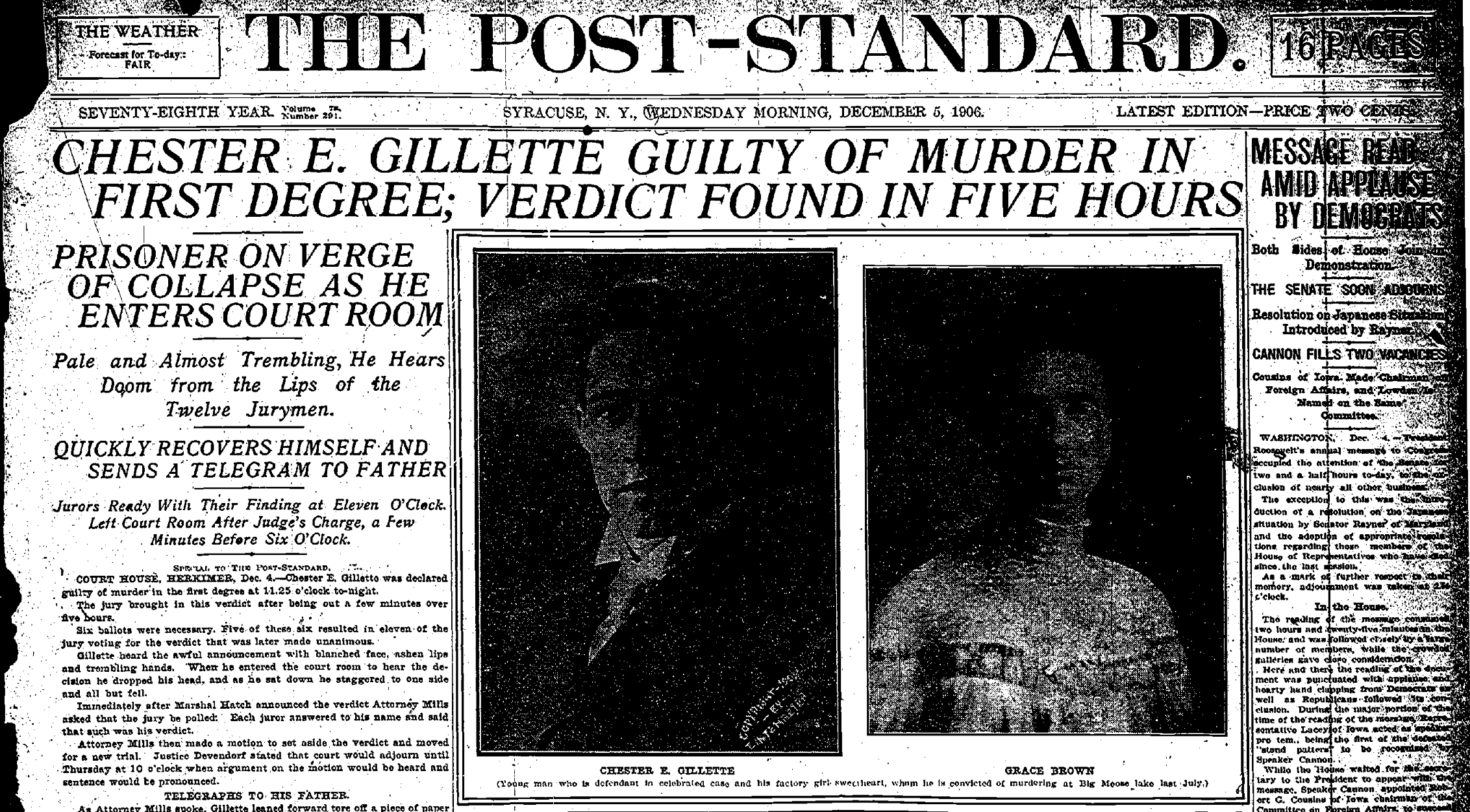This article was written by Susan N. Herman, Centennial Professor of Law at Brooklyn Law School and the President of the American Civil Liberties Union. She has spoken and written extensively on topics including law & literature, constitutional law, and criminal procedure. Her most recent book is Taking Liberties: The War on Terror and the Erosion of American Democracy. Prof. Herman talks more extensively about People v. Gillette in Issue 11 of The Historical Society of the New York Courts’ Judicial Notice, a journal of articles of historical substance and scholarship that uniquely focuses on New York legal history. This latest issue of Judicial Notice is ready to be shipped out and is only available to Society Members. Don’t miss out and become a member by clicking on the following link: Join the Society.
Photo: The Post-Standard, December 5, 1906. Courtesy Old Fulton Postcards, fultonhistory.com
Over a hundred years ago, a New York jury convicted Chester Gillette of a murder he may or may not have committed.
Almost a hundred years ago, a fictional jury in Theodore Dreiser’s masterful novel An American Tragedy convicted the identically initialed Clyde Griffiths of what was essentially the same crime.
For years after the Gillette trial, people debated whether or not the conviction had been just: in the words of a popular song, “only God and Gillette” knew for sure if Chester Gillette was actually a murderer. The readers of An American Tragedy are still pondering not only the justice of the verdict against Gillette’s doppelganger, but the nature of the society that shaped him.
When Chief Judge Judith Kaye invited me in 2006 to give a law and literature talk at the newly renovated Court of Appeals on the hundredth anniversary of the Gillette case, I agreed without yet knowing just how rich and rewarding it would be to compare the actual trial with Dreiser’s adaptation. The Historical Society of the New York Courts invited me to give an encore talk at the New York City Bar Association a few years later, and I was very pleased to accept the Historical Society’s recent invitation to publish a written version of my account, “People v. Gillette and Theodore Dreiser’s An American Tragedy: Law v. Literature,” in 11 JUDICIAL NOTICE (2016).
The Gillette trial was a sensation in its day for good reason. Gillette, a poor young man with a wealthy uncle, found himself entangled with a poor young woman who, pregnant with his child, wanted him to marry her. But doing the right thing would have separated him from the more affluent class of people with whom he had been socializing, preventing him from realizing his American dream of wealth and privilege. And so, the prosecution contended, he took the young woman into a rowboat on Big Moose Lake, clubbed her, and threw her body overboard.
The salacious and melodramatic details of the Gillette case (including the young woman’s poignant love letters to Gillette, which were read to the jury and sold to spectators) riveted the public in 1906. But Dreiser saw more than a juicy story. Reproducing many aspects of the actual Gillette case exactly (including the love letters), he intriguingly changed other aspects of the story, as I explain in my essay, in order to use the case as a vehicle for examining American society as well as American criminal justice.
In my essay I also discuss the different versions of the Gillette story in the novel and in the films based on the novel. And I examine the use Dreiser made of the powers of fiction which, perhaps surprisingly, turns out to be a better vehicle than real life for examining the nature of truth and of tragedy.

